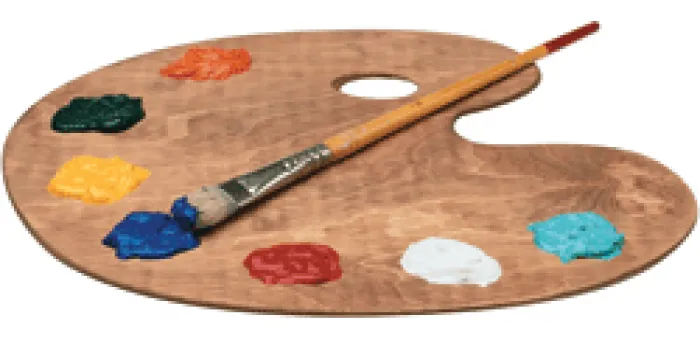Sarah Watson, MA, a Limited Licensed Professional Counselor (LLPC), was 12 years old when her paternal grandfather passed away. She vividly remembers feeling the grief but being unable to articulate it.
That was in 1995, when the bleeding disorders community was still coming to grips with the spread of HIV. Watson’s grandfather, who had severe hemophilia, died of HIV complications. So had her uncle five years earlier.
“Why don’t you draw what you are feeling?” Watson’s grandmother suggested. Alone in her room, Watson ripped a plain piece of paper to create a jagged edge. She then used pastel blue chalk, a color that her grandmother said represented peace, and started to create lines on the paper.
“This was my second experience with death in the family,” says Watson, who lives in Royal Oak, Michigan. “I had been avoiding feelings.” But the drawing helped her focus intently on her grandfather and what his life and death meant. Watson chose colors and created figures that captured what words couldn’t.
“Since then, art has been something I have used to process thoughts and feelings,” says Watson, 30, who has mild hemophilia A.
Bringing art to bleeding disorders
As a trained art therapist, Watson blends artistic creation with counseling. Art therapy employs painting, collage making and other forms of art as tools. The creative process, guided by a trained therapist or counselor, is used to explore emotions, manage behavior and addictions, and decrease anxiety, according to the American Art Therapy Association in Alexandria, Virginia. The organization promotes art therapy to the general public, and sets standards for art therapists, who must have a master’s degree to practice.
Commonly used in hospitals, rehabilitation facilities, crisis centers and schools, art therapy is designed to benefit people who may be coping with a traumatic event or a physical or mental health condition. It’s also used to foster self-awareness, improve self-esteem and restore a sense of well-being.
Art is now something the National Hemophilia Foundation (NHF) plans to use at several upcoming conferences and camps as part of the Victory for Women initiative to help women deal with bleeding disorders. Watson led sessions at a women’s retreat in Virginia in June. She will also facilitate an interactive session with girls at the summer camp in Michigan this year, and during a session at NHF’s Annual Meeting in Anaheim, California, in October.
The idea to fold art therapy into NHF efforts nationwide partly stems from the work Watson has already done. At age 16, she began leading arts and crafts sessions as a counselor at Camp Bold Eagle, the bleeding disorders camp run by the Hemophilia Foundation of Michigan (HFM).
In summer 2010, Watson hosted the first art therapy session at the Michigan camp for 20 young people, ages 6 to 14. “Heart Art” targeted children and teens who had been through traumatic events, such as deaths in their families, their parents’ divorce or difficulties in school.
Artistic benefits
Patrice Thomas, NHF’s manager of education and coordinator of the Victory for Women program, noticed that Watson attended women’s sessions at NHF’s 64th Annual Meeting in Orlando in 2012. A theme emerged from those sessions: “Living with a bleeding disorder affects their relationships with their bodies,” Thomas recalls. Although such presentations are informative, they may not offer the same uplifting tone and introspection as art therapy, Thomas says. When Watson suggested art therapy for women, Thomas knew it would be a good fit. “Art offers a different way to explore those issues than listening to a presentation,” says Thomas.
Watson’s sessions for chapters and at Annual Meeting will focus on how art can be a tool for an unaffected mother caring for children with bleeding disorders or for an affected girl sidelined by a painful bleed. “Art at home is helpful, but there is a difference between creating art on your own versus working with an art therapist,” says Watson.
Colleen Joiner, LMSW, HFM client services coordinator, witnessed women’s reactions to Watson’s two-hour workshop at a chapter retreat last fall. “She came in with a wide array of paper, magazines and fun materials, and asked them to create a collage representing who they were in the past,” Joiner says.
Watson then had them create another collage of who they are now and a third about future dreams. Some chose photos; others worked with symbols or drew their ideas. “For many of them, it brought up something they hadn’t thought about or couldn’t express until then,” says Joiner. “With art, you’re using your hands and a different part of your brain to look at life.”

